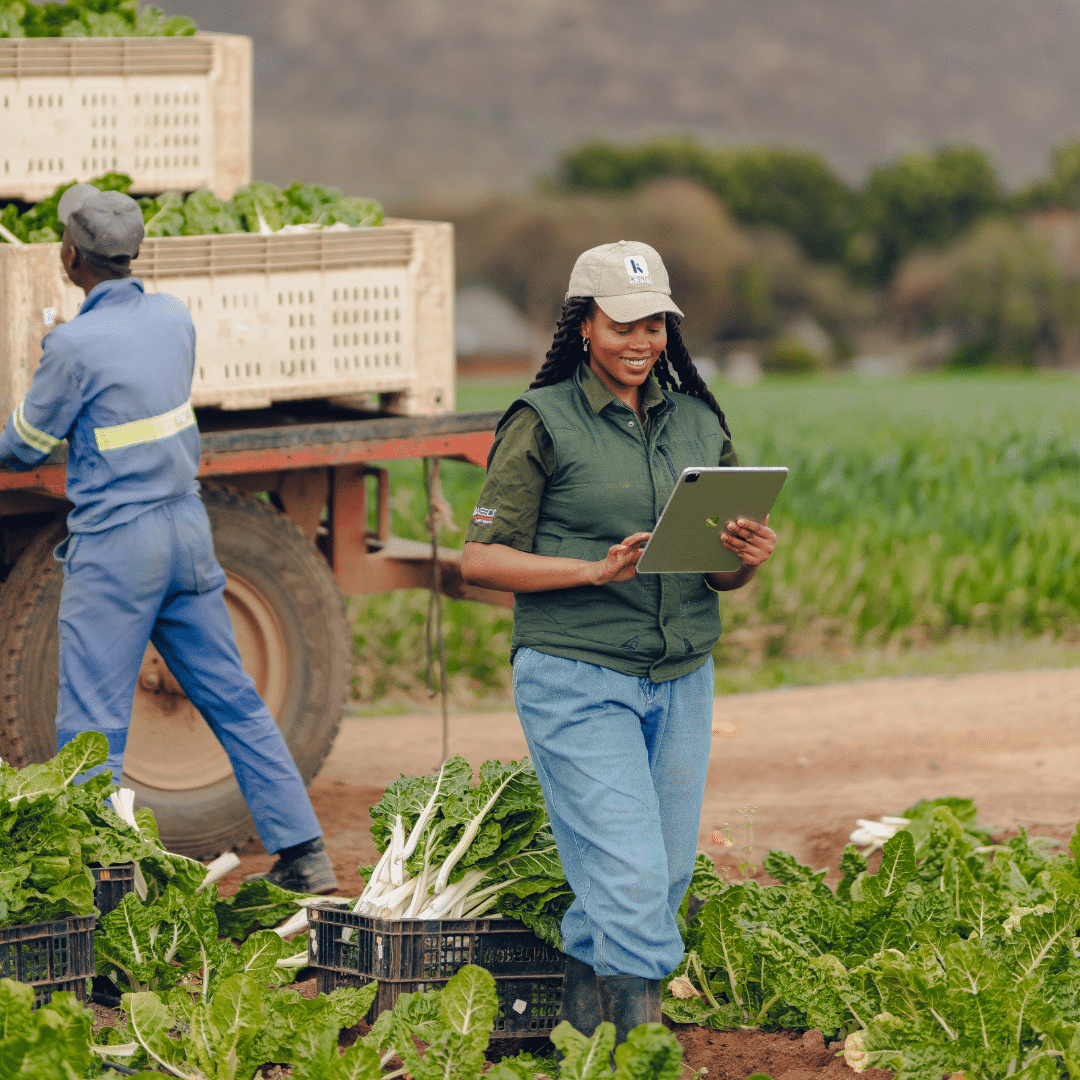Gugulethu Mahlangu
Founder and CEO, House Harvest
South Africa
In 2018, Gugulethu Mahlangu went home to the rolling plains of the Highveld in South Africa. In a landscape dominated by livestock farmers, she planted cabbages, only to soon find them waterlogged.
Counterintuitively, this first failure was the moment she realized she was going to be a farmer.
“I found that there’s just so many numerous opportunities, especially for young African women. That’s just what made me cultivate the love for agriculture, because before I really felt like it was roses and sunsets, but when you get in the industry itself, you realize that it’s a lot of work. It’s patience, it’s money, it’s time, it’s investing in trying, learning, and picking yourself up back again.”
Mahlangu describes aquaponics as a soilless farming method.
She uses the Deep Water Culture (DWC) method.
In DWC, the nutrient-rich water is circulated through long canals while rafts float on top, according to the Food and Agriculture Organization (FAO). The plant roots hang through holes, absorbing nutrients and oxygen. According to the FAO, this method is commonly used for commercial aquaponics with a high stocking density of fish.
Mahlangu explains that fish provide 10 out of 13 nutrients plants need.
“It’s economical once it starts, and can provide you with a system that can employ people all year round, because it runs all year round.”
Mahlangu says aquaponics is a climate smart-solution to agriculture. Unlike traditional agriculture that is seasonal and based on economies of scale, aquaponics requires limited space.
“Global warming isn’t a regional issue. It’s not an African problem. It’s a planet problem. So, we are contributing to that positively.”
Technology like aquaponics can be a method of alleviating food insecurity in densely-populated and urban areas.
“Apparently, they say in South Africa, we are food secure. But we are insecure in the way that food gets accessed. Here comes a solution like aquaponics or vertical farming saying ‘I can meet you where you are, I can meet you on your balcony, I can meet you in your township, in your limited space’.”
She has worked as an aquaponics horticulturist at Finleaf Farms. Now, Mahlangu has returned to her hometown of Witbank in the Highveld of Mpumalanga, South Africa, to build her own facility, named House Harvest, in an urban setting.
Focused on trial and error, she’s going to gather her own data in the South African context before acquiring an investor and scaling. Since aquaponics is a high investment, she wants to produce high value crops to get an ROI as quickly as possible, focusing on restaurants.
As a 29-year-old emerging farmer, she understands the challenges in this sector.
“I think the first thing is because aquaponics is so new, the government doesn’t know what you’re talking about. They know aquaculture, they know about tilapia and all sorts of freshwater fish…So, it sometimes feels like I’m on a tangent on my own.” Mahlangu feels like a pioneer—on a stressful but exciting journey, she concludes.
